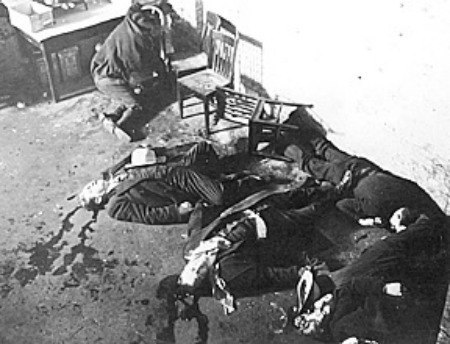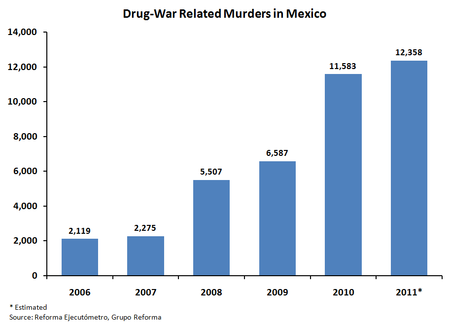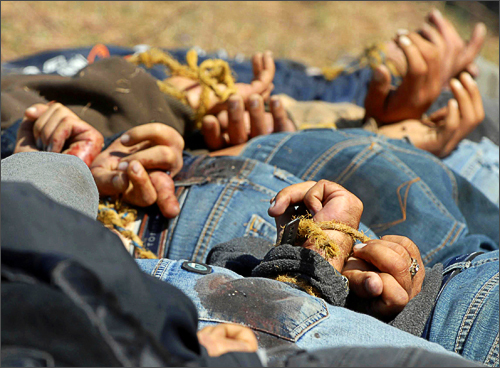
by Pietro Scopa
The recent legalization of marijuana for recreational purposes in Colorado and Washington have rounded out a currently developed set of social characteristics akin to the four years between the Stock Market Crash that caused the Great Depression and the Repeal of the 18th Amendment, the Prohibition Amendment in 1932. Many of the social, political, and economic factors that played a role in Prohibition Repeal have been retrofitted to today’s reality. Some of these factors include the need for taxes/revenue/tax relief, increased public support, and disgust for the violence perceived to be caused by prohibition.

The Federal Debt as of the end of 2012 is over 16 trillion dollars; an incomprehensible amount. It seems the Federal government will soon be turning to revenues to help alleviate the pressures placed on society caused by an unsustainable spending deficient. A similar, while not as large, fiscal dilemma was occurring in the 1930’s, when tax revenue decreased a combined 60 percent over the first three years of the Great Depression. Revenue from capital gains taxes disappeared due to the collapse of the Stock Market. While all this was happening, the demand for government assistance had increased sharply.
Replacing prohibition enforcement with a new tax source is and was an appealing option. So much so that in 1930 Pierre du Pont of DuPont Chemicals created the Association Against the Prohibition Amendment (AAPA) in hopes of repealing not only the 18th Amendment but the 16th Amendment as well the amendment creating the income tax. While most conservative groups are not calling for marijuana taxation as debt relief, Colorado and Washington marijuana law legalization activists successfully used this idea to get their initiatives passed in their respective states. Christopher Stiffler of the Colorado Center on Law and Policy estimated 60 million dollars in new tax revenues to the State of Colorado.

Public support for the legalization of marijuana is at a fever pitch. Supporters are materializing in the strangest of places. Former George W. Bush appointee to the Western District of Washington State was a major contributor to the legalization effort in Washington. In conservative Ohio, Quinnipac showed a 44 percent favorability rating in 2012. House Bill 6606, a bill allowing states to decide their own marijuana policy without Federal interference, has bi-partisan support.
The overall mood of the country is also shifting. An October Gallup poll found 50 percent of the United States is in favor of legalization, up from 44 percent in 2009 and 31 percent in 2000. The World Health Organization in 2008 claimed that the United States led the world in marijuana consumption, 42.4 percent of Americans consumed it.
This is strikingly similar to the unexpected support that developed for Repeal in the 1930’s. Representatives from the driest of states including Ohio, Illinois, and Kansas were replaced by the voters with pro-Repeal congressmen. Mabel Willebrandt, former Assistant Attorney General and darling of such Dry organizations as the Anti-Salon League and the Woman’s Christian Temperance Union, took on clients of home brewing kits and assisted companies like Fruit Industries in securing millions of dollars from the Federal Farm Board to help them get a home wine making business off the ground. Perhaps the most jaw dropping convert from Prohibition to Repeal was Richmond Hobson. Hobson introduced the 18th Amendment in 1914. He left the Prohibition cause outright in the 1930’s. “When people are ripe for reform, the laws will take care of themselves,” he said of the Repeal movement.
The violence of Mexican drug cartels has been at horrific levels for years. Under the six year term of Mexican President Felipe Calderon there were an estimated 60,000 drug related killings. Included in these numbers are politicians, journalists, and Americans. President Barack Obama deployed 1,200 National Guard troops to the boarder in 2010. Demand for drugs in the United States has fueled this violence.
Marijuana plays a part of the drug violence seen on the border. Mexican think tank Mexican Competitiveness Institute claims that 22 to 30 percent of revenue earned by the cartels comes from marijuana. While the overall percentage of alcohol revenues generated for the crime syndicates of the 1920’s are not certain, they were a large portion. Stories like the St. Valentine’s Day Massacre and gun fights along Lake Erie disappeared after Repeal. This was welcomed by all and would be welcomed again.
The momentum is shifting toward legalization of marijuana law. Be ready.

Leave a Reply